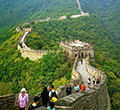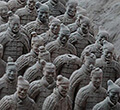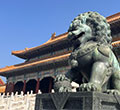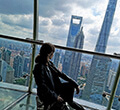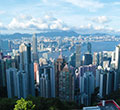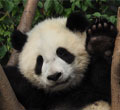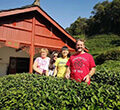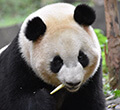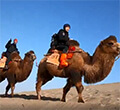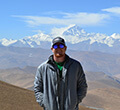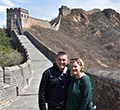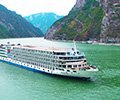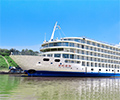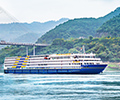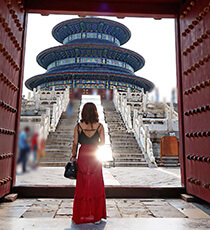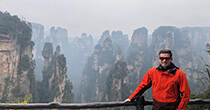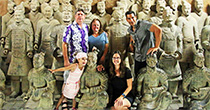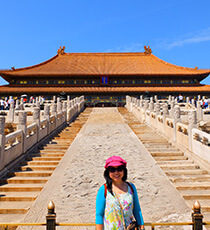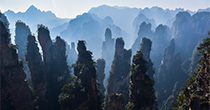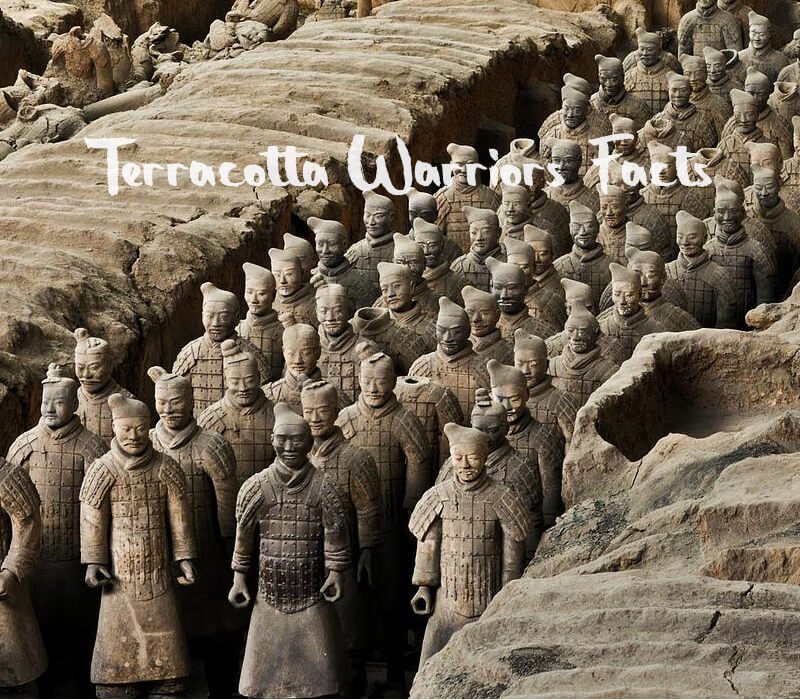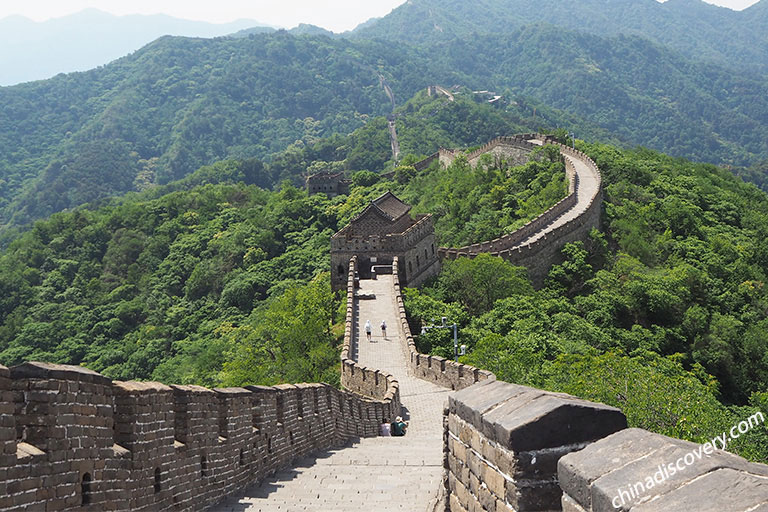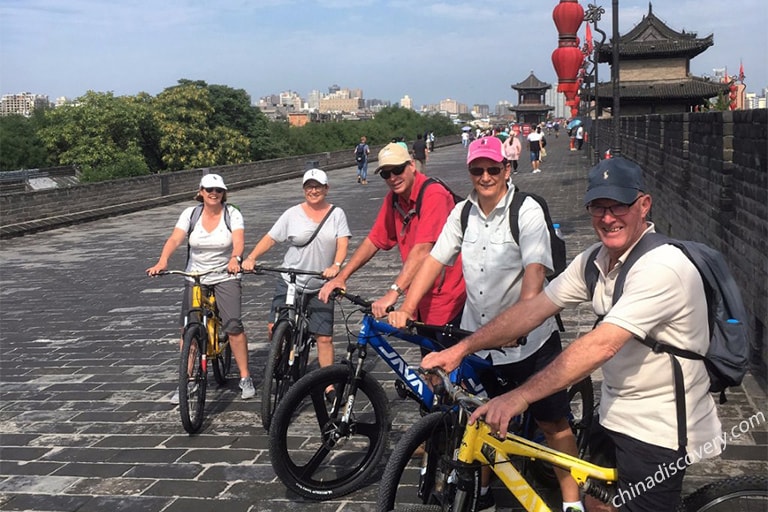Terracotta Warriors Facts - 10 Questions about The Terracotta Army 2025/2026
The Terracotta Warriors and Horses is a collection of terracotta sculptures buried as the funerary objects of Qin Shi Huang, the first Emperor of China who started the first version of the Terracotta Warriors. Visited by many presidents and heads of countries and regions such as the Queen of UK, former President Nixon of the United States, former Prime Minister Lee Kuan Yew of Singapore, former President Chirac of France, former Prime Minister Yoshihiro Ohira of Japan, and so on, the clay-colored Terracotta Warriors is a mysterious wonder with many questions lingering behind. The followings are top 10 most frequently asked questions about it.
Qin Shi Huang, the first emperor of China, who unified the warring kingdoms, ordered the construction of the Terracotta Army as soon as he ascent to the Qin’s throne in 246 BC, while most decisions were made by officials as he was only 13. It is believed the Prime Minster Li Si (李斯) designed the project and head supervisor is Zhang Han (章邯), the Senior General of Qin’s Army. More than 700,000 workers were enrolled or forced to participate, including soldiers, craftsmen, and peasants. There are four pits were planned to build. As they got partially excavated, in three of them stand the terracotta warriors and one pit left empty, which is believed the unfinished because of Qin’s sudden death in his 50s, and his tomb still remains unexcavated.
Recommended Xian Tour including Terracotta Warriors:

Amazing Terracotta Warriors

Terracotta Warriors in the Pit
There is an army of over 8000 clay soldiers found to accompany emperor Qin in afterlife. Estimated in 2007. the terracotta warriors standing underneath the ground with most of them remained unearthed in the pits of Qin Shi Huang’s Mausoleum. Besides soldiers, 130 chariots, 520 horses and 150 cavalry horses also belong to the stunning clay army.
Recommended Xian Tour:
In March 1974, several local peasants in Xiyang Village, Lishan Town, Lintong County, was digging a well. Suddenly they found broken pottery pieces. Some thought it might have been an abandoned kiln, so they wanted to excavate some pottery that could be used. However, it was found that was not just a kiln, and several broken life-sized terracotta warriors were excavated by them and they realized there might be some ancient relics and reported to the government. After exploration and excavation by the Shaanxi Provincial Archaeological Team, the terracotta warriors and horses reappeared to the public.

Exploration of the Actual Pit Location of Terracotta Warriors

Our Customers' Visiting to Terracotta Warriors
Built in 246 BC or 247 BC, the terracotta warriors endure over 2200 years. According to the historical records written by Sima Qian (145–90 BCE), it took about 39 years to build these clay warriors, and many people believed the actual planned project had leaved unfinished because of the sudden death of Qin Shi Huang and all the terracotta warriors had to be buried with his mausoleum.
In the ancient time, people believed in afterlife, and human sacrifices were commonplace. When the King or the noble died, objects included jewelry, slaves, weapons, silk, and satin were buried with the master, and many of the selected people were also forced to commit suicide and follow their master to the afterlife. Some of them got no sense and drunk the poisoned wine and died, and there were still some people who regarded it as an honor from their master. This human sacrifice were still found at the tomb of Qin’s King before Qin Shi Huang, around 550BCE.
After Qin Shi Huang’s unification of the warring kingdoms, the population had decreased a lot during the wars. Though he was pursuing immortality during his reign, he was still preparing for the afterlife with his army, which was believed to guard his tomb and announce his ruling would not cease even after his death, and The terracotta warriors might serve as substitutes for actual human sacrifices and display the glory of Qin’s empire.

An Array of Terracotta Army

Terracotta Warrior Close-up
The potters and craftsmen who made the terracotta warriors and horses were from the lower class of the Qin Empire. Some of these potters came from government pottery workshops and some from local pottery workshops. In order to control the quality of the clay warriors and manage of craftsmen and their project, each part of pottery was signed and noted by every single maker. Archaeologists have found some inscriptions or stamps in the noteless places of unearthed terracotta figures and pottery horses. The number of words is very small, usually only 2 words, 11 words at most; besides the id of the warriors, the craftsman’s name is also on it. There are 80 pottery names found on the terracotta figures, all of which are excellent pottery workers with rich practical experience.
During this time-consuming project, many people died during the construction process and had devoted all their life making the terracotta warriors, and they were found buried around the tomb. Because of the sudden death of Qin Shi Huang, the project left unfinished and many of the craftsmen were buried alive as human sacrifice around the tomb, also in order to keep the mausoleum of Qin Shi Huang as a secret from being discovered and dug out.
Recommended Xian Tour including Terracotta Warriors:
The height of a standing terracotta warrior statue is about 1.8 to 2 meters, while the base of the terracotta warriors and horses is about 5cm to 20cm. Therefore, the actual height of a standing terracotta warriors from its foot to the top is about 170cm to 181cm. A large number of archaeological data show that the average height of the ancient people in the Qin Dynasty is about 166cm. That is to say, the terracotta warriors and horses are about 10 square meters taller than the average height of the people in the same period. There are many types of terracotta warriors and horses, and their shapes are quite different. The average weight of a single terracotta warriors is about 180 kg, the heaviest is the terracotta horse, more than 300 kg. The heaviest terracotta warrior is about 250 kg (commonly known as the General Terracotta Warriors), and the lightest is about 100 kg of the kneeling and shooting terracotta warriors.

Our Customers' Visiting Terracotta Warriors

Terracotta Warriors in Pit 3
According to the research on the terracotta warriors and horses excavated, the production of terracotta warriors can be roughly divided into three steps:
Step 1: Make terracotta warriors' trunk roughly from clay.
Step 2: Make the detailed sculpture carvings on the basis of the first step.
Step 3: Put the head, limbs and trunk together to complete the terracotta warrior.
The terracotta warriors would be dried in shade and then put in a kiln. The temperature is about 1000 C. After the figurines were burned out of kiln, they were to be painted one by one, and the production of the terracotta figurines was finally completed. The terracotta warriors and horses were built in the site near the pit of the terracotta warriors and horses. The clay used was the local earth, mixed with quartz sand. Previously, it was speculated that the terracotta warriors were produced in batches by moulding, but according to the fragments of the excavated terracotta warriors and the different shapes of each terracotta warriors, this hypothesis was proved wrong. Usually, it takes at least two weeks to complete one terracotta warrior with this traditional method.
Recommended Xian Tour including Terracotta Warriors:
The height and uniform of the Terracotta Warriors varies by rank. There are two main categories: soldiers and officers. The officers also belong to different classes, namely junior, intermediate and senior. Generally, soldiers don't wear crowns, but officers do. The common officers' crowns are different from general's crown, and even the armor is different. Among the soldiers, terracotta warriors include infantry, cavalry and chariot soldiers. According to actual need, different warriors are quipped with different weapons, and there is not any same soldier found among the 8000 warriors. Their facial features, age, hairstyles, and the size and the clothes and the actual height and figure all vary and there are not any terracotta warriors found the same, and most of the warriors carry the real weapons. About 40,000 well-preserved bronze weapons were found, including bows, crossbows, arrows, beryllium, spears, swords, machetes, arrowheads, etc.

Terracotta Warriors Group with Horses

Original Color of the Painted Warrior
The terracotta warriors unearthed in the pit were all painted with multiple colors, while most of the colors had oxidized and fallen off the first few minutes they get out from the earth. Therefore, most of the terracotta warriors seen by tourists reveal only the clay color. According to archaeologists' preliminary statistics and analysis of unearthed terracotta warriors, it is known that there are many kinds of colors of Qin terracotta warriors, such as pink, vermilion, purple, blue, white, ochre and so on. Colors are also inlaid in the collar, sleeves. The color of trousers is generally pink-green, and there are red, blue, pink-purple, white and so on. In a word, the colors of Qin terracotta warriors are various and vibrant, but there is no uniformed color. Among the many colors, pink green, vermilion, pink purple and blue are the four most commonly used colors. Therefore, these four colors should be the main colors of Qin’s terracotta costumes. These pigments are the main pigments of traditional Chinese painting.
Among all the pigments, there is one called Chinese purple, or Han purple, which is found so mysterious because of its two-dimensional properties, and some scientists are doing research on this rare material and looking forward to apply it to the maglev trains and quantum computers.
Recommended Xian Tour including Terracotta Warriors:
